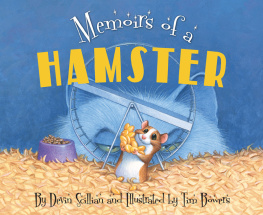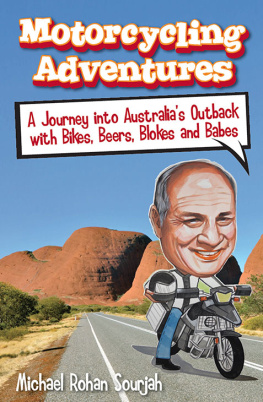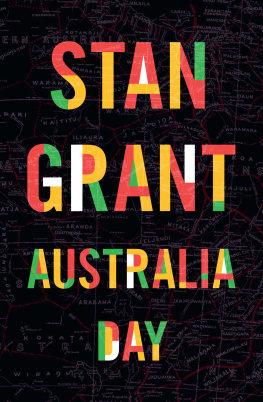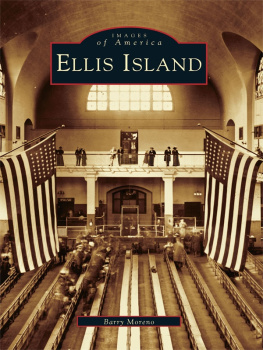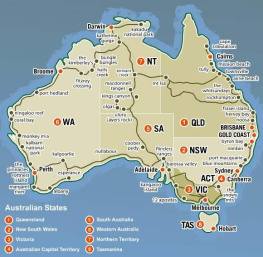D is for Down Under
An Australia Alphabet
Where in the world could you hear the hum of a didgeridoo and Gday, Mate and enjoy Bondi Beach while wearing your sunnies (sunglasses)? Why, in the Land Down UnderAustralia! In D is for Down Under: An Australia Alphabet, young readers are invited to visit the worlds smallest continent to explore its unique landscapes, sheep shearing stations, and to complete the journey with a Vegemite sandwich.
Lively poems introduce each topic followed by in-depth expository text.
Were hitting the road with a jeep full of gear,
bound for the rugged Australian frontier.
O is for outback where legends abound
and wild and wonderful creatures are found.
Authentic, entertaining illustrations straight from Melbourne bring the spirit of Australia to the pages of this alphabet book.
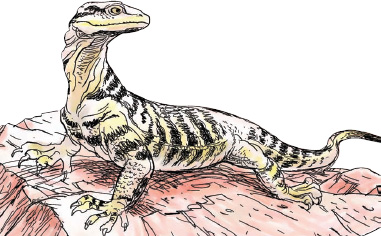
D is for Down Under
An Australia Alphabet

Written by Devin Scillian and Illustrated by Geoff Cook
To the Flynns
Chris, Kathy, Kelsey, and Victor
Devin

For Sue
my wife and buddy
Geoff
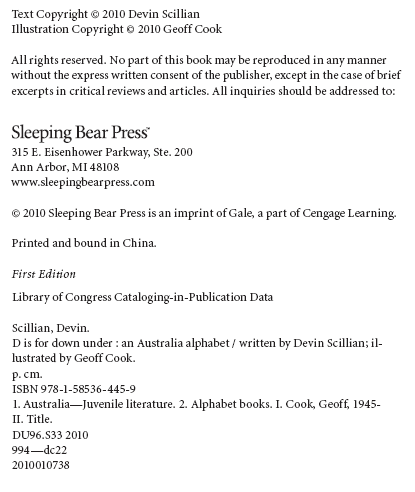

A
The Aboriginal people are the natives of the Australian continent. Their culture is among the very oldest on earth, stretching back perhaps 40,000 years. Their traditions are defined by a deep reverence for the natural world around them. Rocks, trees, rivers, canyonsthey are all sacred and connected in Aboriginal thought. Through these beliefs, the Aboriginal people learned long ago to live in harmony with their natural surround ings, moving with the seasons to find food and shelter.
The arrival of European settlers in the 1800s had a devastating impact on the Aboriginal people. The settlers brought with them diseases, guns, and a desire for land and resources that overwhelmed the native population. Eventually, British rulers forced the Aboriginal people to abandon their culture and beliefs. At the start of European settle ment, nearly 300 native languages were spoken in Australia; today, all but about 20 have largely vanished. But with the passage of time, modern Australians have gained a new respect and understanding for Aboriginal culture, traditions, art, and music. Todays Australia has learned to celebrate the rich and unique nature of its native people.
Wed best begin our trip with a big Australian A for the Aboriginal people well meet along the way.
Long ago they understood in dreams by and by the spirit of Australia is in the land and sky.

B
Being the worlds largest island, Australia is, of course, surrounded by water. To the east lies the Pacific Ocean; to the west, the Indian Ocean. The northern coast of Australia includes the Timor, Arafura, and Coral Seas. And along the southern coast youll find the Southern Ocean and Tasman Sea.
There are more than 22,000 miles of beaches on the Australian continent. Most Australians live near the coastal areas of the country in fact, 85% of the population lives within an hours drive of the coastline. That means the beach is deeply ingrained in Australian culture.
Australian beaches are extremely diverse, from quiet, crystalclear pools of water to roaring swells of pounding surf where the worlds best surfers gather to challenge enormous waves. Among the most famous beaches are Bondi and Manly in Sydney, St. Kilda in Melbourne, and Cottesloe in Perth.
From Brisbane to Bondi, beyond and between, B is for the beaches, the best youve ever seen.
Basking in the sunshine or bobbing in the bay, being barefoot on the beach is a perfect Aussie day.

C
Australias crocodiles are found in the state of Queensland in the tropical north. There are two kinds of crocodiles native to Australia. The Johnstons crocodile is found in the freshwater areas of Queensland, while the estuarine crocodile prefers saltwater. Saltwater crocs can grow to be very large and occasionally attack horses and cattle at watering holes.
Several famous Australians have been associated with crocodiles, and thus, many people the world over think of the enormous reptiles when they think about Australia.
Steve Irwin was known as the Crocodile Hunter, and his television adventures in the Australian wilderness taught people every where about Australian wildlife.
In 1986 Paul Hogan starred in Crocodile Dundee, a movie about a heroic outdoors man from the Australian Outback. The film introduced many people to Australian culture and language, and Hogan became a kind of Australian ambassador to the world.
Our C is in the water with a very crooked smile.
Dont come any closer C is for crocodile!
He sneaks along in silence, looking for his food.
He has a rotten temper and a nasty attitude.

D
The didgeridoo (didjeridoo) is commonly considered the worlds oldest wind instrument. Wall paintings in Northern Australia suggest that the didgeridoo has been around for nearly 1,500 years. While the word didgeridoo may sound like an exotic Aboriginal term, its believed to have been a Western term invented to describe the oddsounding instrument that no doubt seemed so foreign to European settlers. Among Australias indigenous people there are many different words for a didgeridoo including yirdaki, garnbak, and paampu
Didgeridoos are made from the thin trunks of live eucalyptus trees that have been hollowed out by termites. They can vary greatly in size from three feet to nearly ten feet long, and they are often intricately decorated.
A didgeridoo makes a long, droning, vibrating sound. While it can be played as a solo instrument for fun, it is also often played in important Aboriginal ceremonies.
D is also for down under. Most of the worlds population sees Australia and New Zealand sitting in the Southern Hemisphere, toward the bottom of the globe. For this reason, both countries are referred to as the land down under.
For letter D, some music please. Well play a song or two.
A sound like none youve ever heard D is for didgeridoo.
A didgeridoo hums deep and low, a quirky kind of buzz.
Nothing else can make the sound an Aussie didgeridoo does.

E


